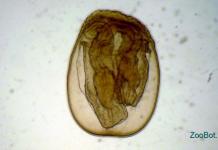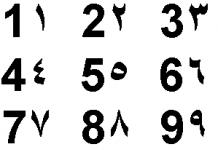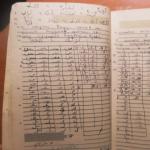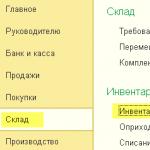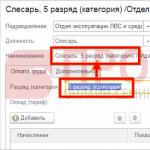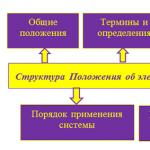Class Bryozoa (Bryozoa)
Bryozoans are peculiar colonial sessile animals belonging to the type of tentacles (Tentaculata). They live in the seas, less often found in fresh water bodies. Colonies of bryozoans are usually tree-like and branched. Individual individuals of the colony filter out planktonic organisms using tentacles sitting on a horseshoe-shaped outgrowth. Bryozoans settle on stones and other underwater objects. Creeping bryozoan (Plumatella repens) is common here.
Biology
A colony of bryozoans consists of a large number of microscopic individuals (zooids), each of which is enclosed in a calcareous, chitinoid or gelatinous cell (zooecia, cystids). Through the opening of the zooecia, the anterior part of the zooid body (polypid) extends, carrying a mouth opening with a corolla of ciliated tentacles (lophophore). The movement of cilia on the tentacles creates a current of water, which brings food to the bryozoan's mouth - small plankton and detritus.
Due to their sedentary lifestyle, the internal structure of bryozoans is simplified. Body unsegmented; the digestive tract is U-shaped. The anus is located on the dorsal side, not far from the mouth, but outside the lophophore, hence the scientific name of the type - “Ectoprocta” (from the Greek ektos - outside, proktos - anus). There are no circulatory, respiratory or excretory systems. Breathing occurs through the surface of the body, especially through the tentacles. The functions of blood are performed by coelom fluid. The excretion occurs through the intestines. The nervous system consists of one ganglion and the nerves extending from it.
In bryozoan colonies, polymorphism is often observed, that is, differentiation of individuals according to structure and function. Individuals that feed the rest of the colony are called autozooids. There are also avicularia (thanks to beak-like projections, they protect the colony, scaring off predators), vibracularia (cleaning the colony), kenozooids (strengthening the colony), and gonozooids (produce eggs and sperm). The most integrated colonies essentially resemble a single organism.
Reproduction
Most bryozoans are hermaphrodites. Reproduction is possible sexually and asexually. Some species spawn eggs and sperm into water, where fertilization occurs; however, most bryozoans carry eggs in zooecium or in special brood chambers called ovicells, capturing free-floating sperm with their tentacles for fertilization. The developed larva leaves the brood chamber. The larvae are trochophore-shaped, equipped with a corolla of cilia, some (cyphonautes) - and a bivalve shell. The larva attaches itself to some object and, having undergone metamorphosis, forms the first individual - an ancestrula, from which a new colony buds off.
The expansion of the colony occurs mainly due to budding. Freshwater species also form internal buds protected by a durable shell - statoblasts. If the colony dies due to drying out or freezing, the statoblasts survive and give rise to new individuals.
Lifestyle
Bryozoans are widespread in fresh water bodies and seas, where they are found from the high tide to a depth of 200-300 m (rarely up to 8200 m). The vast majority of species are colonial and sessile; some colonies are able to move, and the species Monobryozoon ambulans does not form colonies at all. Colonies of bryozoans can be found on sand, stones, shells, algae and even fish; some (there are more than 125 species) grow on the bottoms of ships. Those bryozoans whose colony walls are impregnated with calcium take part in the formation of reefs.
Bryozoans feed on microorganisms, including diatoms; in turn, they serve as food for sea urchins and fish.
Bryozoans (Plumatella fungosa). Clicking on the image will open the corresponding article.
Let me remind you that I managed to find the first larvae of the fungiform bryozoan in a container with a small piece of the colony taken from the river. However, due to various circumstances, I was not able to subject them to proper study.
Friends! This is not just an advertisement, but mine, personal request. Please join ZooBot group on VK. This is pleasant for me and useful for you: there will be a lot there that will not end up on the site in the form of articles.
The subjects died the next day, leaving some uncertainty as to whether the creatures discovered were actually Plumatella fungosa larvae.
Bryozoan larva (Plumatella fungosa) in reflected light
This time a special outing was made to the river for another sample of bryozoans. Like the last time, by the evening of the same day, several briskly moving oblong creatures had already appeared in the container, the shape of which is approximately characterized as an ellipsoid measuring about 1-2 mm in length and 0.8-1 mm in diameter.

Upon closer inspection, inside you can see two embryos of future individuals, looking like two bent tubes.

The larvae move very intensively. Due to the transparency of the shells, but at the same time being quite large in size, the bryozoan larvae turned out to be a very interesting object of observation, allowing a good look at the internal structure.

This type of larvae is called trochophore-shaped. They have an elongated shape, with two belts of flagella along the equator. The oral opening opens to the equator, the anal opening is located on the axis of movement from below. This is according to Wikipedia.

Bryozoan larva (Plumatella fungosa) under high magnification
So, I couldn’t consider practically any of the above. At least nothing like flagellar belts. This, of course, does not mean that they are not there. It was also not possible to identify the stomach without staining. But, on the other hand, I became (almost became) a witness to a breathtaking spectacle...
Formation of a bryozoan colony from a larva
One could only dream of witnessing the establishment of a larva and its transformation into a colony. But there was hope: in a container with bryozoans, I scraped these interesting things from the wall, vaguely similar to the Flying Spaghetti Monster - newborn small colonies of two individuals:

But they were all somewhat crippled: being forcibly torn off from the substrate had severely traumatized them.
But the larvae placed for observation did not want to transition to a sedentary life. They rushed madly in a drop of water, testing my patience. And my patience gave out, I took my eyes off the microscope to surf Vkontakte.
Just for a couple of minutes!

Imagine my amazement (and indignation) when, the next time I looked through the eyepieces, it turned out that there were no more larvae in the drop! Seizing the moment when no one was looking at it, it transformed into something completely different, in which one could discern a suction cup, a body and two holes from which the tiny corollas of newborn bryozoans timidly peeked out.

A newborn colony of fungiform bryozoans, the first timid movements of the tentacles
The corollas gradually came out to their full length and straightened out. I looked at this action with admiration, feeling like an obstetrician delivering a baby.

A newborn colony of fungiform bryozoans straightened their corollas
Of course, the experiment had to be repeated. But this time the bryozoans decided to make fun of them, and the three larvae deposited in a drop ultimately chose to dry out, but did not build a colony in the presence of an observer.
Nevertheless, despite the fact that I missed the most interesting things, the photos and video materials presented here became an adequate reward for the time spent.

Larvae of the fungiform bryozoan and the birth of a colony: video
The video below was edited from the footage. Unlike the previous video from it, it is not equipped with voice comments, but, it seems to me, the video sequence went so well to the music from the Morrowind toy that comments would only spoil it, and everything that I could say there is written in the article that you are reading.
conclusions
Well, now we have a more or less complete picture of the life of the mushroom-shaped (globular) bryozoan, known as Plumatella fungosa, captured in photos and videos.
The processes of budding, the transformation of a larva into a colony, the formation of larvae and statoblasts have remained behind the scenes, so there is still room for activity.
During the observation process, arose interesting experiment idea: achieve the formation of a new colony on a glass slide, then immerse it in a sufficient volume of water with protozoa and try to observe the growth of the colony, which will be very visual, because Using the example of only two individuals, any changes are very clearly visible.
But this is a separate topic.
0
Bryozoans in fact, they look more like mosses than animals. They live in sea water and resemble small bushes of moss or other plants, and sometimes even shoe mats. The fact is that tiny bryozoans live in colonies, releasing their tentacles like hundreds of miniature sea anemones. The tentacles oscillate in the water and filter out floating pieces of food, which the bryozoans swallow and digest.
Freshwater bryozoans feed on protozoa such as the slipper ciliate, euglena or volvox. Being single-celled, they are smaller than bryozoans. Marine bryozoans eat tiny pieces of algae, marine protozoa, as well as eggs and larvae of larger animals such as worms. Bryozoans capture their prey with tentacles that are covered with microscopic hairs called gutica.
Bryozoans and protozoans consume smaller bacteria. Some bacteria are extremely tenacious. They can be dried, boiled, frozen and even crystallized in the laboratory. When environmental conditions return to normal, they become active again.
In some ways, bryozoans resemble. Both are tiny, no more than half the eye of a needle in diameter. They live inside a dense shell, releasing tentacles to catch food particles. Hundreds and thousands of bryozoan individuals gather together, forming branched colonies that cover surface and underwater objects with a carpet. These could be stones, pieces of wood, large thickets of algae, and even the shells of other animals, for example. In some species of bryozoans, colonies grow upward, like plants, “rooting” with their base on a solid object. Individual individuals of bryozoans are called zooids; they adhere to each other, forming a fan-shaped, brightly colored colony. Such a colony can contain millions of individuals, resembling a sprig of coral.
But most bryozoans are not so showy, forming small, flat, pale-colored colonies, rarely larger than the size of a coin.
Freshwater Bryozoans.
Most bryozoans live in the sea, but some species live in fresh water, especially if it is not polluted.
In some species, the protective shell is not hard, but elastic, and resembles jelly. In late summer and autumn, marine and freshwater bryozoans produce eggs covered with a thick shell. They survive frost and drought well. The eggs can be carried by the wind, facilitating the dispersal of bryozoans into new habitats. In the spring they develop into new colonies.
Internal structure of bryozoans.
A typical bryozoan is no larger than a pinhead. She lives inside a durable shell, like a shoebox, which she herself constructs from lime dissolved in water. The corolla of tentacles surrounding the mouth opening filters out food particles - small pieces of algae and protozoa. They enter the mouth and are digested in the pouch-shaped stomach. In the event of any threat, special muscle fibers retract the tentacles into the shell and close the “door” - epistome- and hold her.
Colony forms.
Some bryozoans settle on brown algae, and against their background, flat, pale lacy fabrics are clearly visible - colonies of these animals. Other bryozoans form bushy colonies that grow to the size of a human hand, usually found in deep water off rocky coasts. Sometimes colonies of such bryozoans wash ashore after a storm, and they look like pieces of pale lacy algae.
animal cell- The bodies of all living things consist of microscopic units - cells. The organism of a protozoan consists of only one cell. Bryozoans consist of 5 thousand cells. The elephant's body is made up of about 100 million cells.

Intraporousaceae.
Intraporocytids are another group of tiny creatures similar to bryozoans. Their largest representative is no larger than a grain of rice. They usually form an attached colony. Some develop on stones, others on algae. A small number of representatives of this group live on animals, including worms, crabs and. Each individual has a horseshoe-shaped ring containing 40 feeding tentacles, a cup-shaped body and a stalk that attaches the animal to the substrate.
Volvox– the main food item for freshwater bryozoans. This protozoan resembles a plant; it uses the energy of sunlight for growth and development. Each floating Volvox ball consists of hundreds of individuals.
Bryozoans:
About 4000 species
They live in the will
Most are marine forms
Each individual has a horseshoe-shaped organ with tentacles - lophophore
Most individuals are hermaphrodites (have both male and female reproductive organs)
They reproduce by eggs with a dense shell
Intraporousaceae:
About 150 species
Live in water
Mainly maritime
Form attached branched colonies
Each individual has a C-shaped corolla of tentacles for feeding
Reproduce by producing tiny young individuals or larvae
Biology
A bryozoan colony consists of a large number of microscopic individuals ( zooids), each of which is enclosed in a calcareous, chitinoid or gelatinous cell ( zooecium, cystid). The anterior part of the zooid's body extends through the opening of the zooecia ( polylipid), bearing a mouth opening with a corolla of ciliated tentacles ( lophophore). The movement of the cilia on the tentacles creates a current of water, which brings food to the bryozoan's mouth - small plankton and detritus.
Due to their sedentary lifestyle, the internal structure of bryozoans is simplified. Body unsegmented; the digestive tract is U-shaped. The anus is located on the dorsal side, not far from the mouth, but outside the lophophore, hence the scientific name of the type - “Ectoprocta” (from the Greek. ektos- outside, proktos- anus). There are no circulatory, respiratory or excretory systems. Breathing occurs through the surface of the body, especially through the tentacles. The functions of blood are performed by coelom fluid. Excretion occurs through the intestines. The nervous system consists of one ganglion and the nerves extending from it.
In bryozoan colonies, polymorphism is often observed, that is, differentiation of individuals according to structure and function. Individuals that feed the rest of the colony are called autozooids. There are also avicularium(thanks to beak-like projections, they protect the colony by scaring away predators), vibracular(colony cleaning), kenozooids(strengthening the colony), gonozooids(produce eggs and sperm). The most integrated colonies essentially resemble a single organism.
Reproduction
Bryozoans feed on microorganisms, including diatoms; in turn, they serve as food for sea urchins and fish.
Classification
 About 5000 species of bryozoans are known, in fresh waters - about 50 species. There are about 620 species in Russia.
About 5000 species of bryozoans are known, in fresh waters - about 50 species. There are about 620 species in Russia.
Divided into 3 classes:
- Naked class (Gymnolaemata). Mostly marine forms with cylindrical or box-shaped zooids. There is no epistome. The lophophore is circular, the polypid moves forward due to contraction of the body walls. Colonies are characterized by polymorphism;
- Class Angiostomata (Phylactolaema). Exclusively freshwater forms with chitinoid or gelatinous zooecia. The lophophores are horseshoe-shaped, the lip hangs over the mouth opening ( epistome). They do not have polymorphism; form statoblasts;
- Class narrow-mouthed (Stenolaemata). Marine species, often with calcareous zooecia. Polyembryony is characteristic.
The oldest remains of bryozoans are known from the Lower Ordovician. In total there are about 15,000 extinct species. Bryozoans reached their greatest diversity in the Paleozoic. Most Paleozoic bryozoan colonies were massive and ponderous; sometimes they built real bryozoan reefs. At the turn of the Permian and Triassic periods, bryozoans almost completely became extinct. From the survivors, a new, Meso-Cenozoic group of bryozoans developed.
Write a review about the article "Bryozoans"
Notes
Literature
- Braiko V.D.. Kyiv, 1983
- Kluge G. A. M.-L., 1962
- // Encyclopedic Dictionary of Brockhaus and Efron: in 86 volumes (82 volumes and 4 additional). - St. Petersburg. , 1890-1907.
|
||||||||||||||||||||||
Excerpt characterizing Bryozoans
A little ahead of them walked a thoroughly wet little peasant conductor, in a gray caftan and a white cap.A little behind, on a thin, thin Kyrgyz horse with a huge tail and mane and with bloody lips, rode a young officer in a blue French overcoat.
A hussar rode next to him, carrying behind him on the back of his horse a boy in a tattered French uniform and a blue cap. The boy held the hussar with his hands, red from the cold, moved his bare feet, trying to warm them, and, raising his eyebrows, looked around him in surprise. It was the French drummer taken in the morning.
Behind, in threes and fours, along a narrow, muddy and worn-out forest road, came the hussars, then the Cossacks, some in a burka, some in a French overcoat, some with a blanket thrown over their heads. The horses, both red and bay, all seemed black from the rain flowing from them. The horses' necks seemed strangely thin from their wet manes. Steam rose from the horses. And the clothes, and the saddles, and the reins - everything was wet, slimy and soggy, just like the earth and the fallen leaves with which the road was laid. People sat hunched over, trying not to move in order to warm up the water that had spilled onto their bodies, and not to let in the new cold water that was leaking under the seats, knees and behind the necks. In the middle of the stretched out Cossacks, two wagons on French horses and harnessed to Cossack saddles rumbled over stumps and branches and rumbled along the water-filled ruts of the road.
Denisov’s horse, avoiding a puddle that was on the road, reached to the side and pushed his knee against a tree.
“Eh, why!” Denisov cried out angrily and, baring his teeth, hit the horse three times with a whip, splashing himself and his comrades with mud. Denisov was out of sorts: both from the rain and from hunger (no one had eaten anything since the morning), and the main thing is that there has still been no news from Dolokhov and the person sent to take the tongue has not returned.
“There will hardly be another occasion like this to attack transport. It’s too risky to attack on your own, and if you put it off until another day, one of the big partisans will snatch the booty from under your nose,” thought Denisov, constantly looking ahead, thinking of seeing the expected messenger from Dolokhov.
Having arrived at a clearing along which one could see far to the right, Denisov stopped.
“Someone is coming,” he said.
Esaul looked in the direction indicated by Denisov.
- Two people are coming - an officer and a Cossack. “It’s just not supposed to be the lieutenant colonel himself,” said the esaul, who loved to use words unknown to the Cossacks.
Those driving, going down the mountain, disappeared from view and a few minutes later appeared again. Ahead, at a tired gallop, driving his whip, rode an officer - disheveled, thoroughly wet and with his trousers billowed above his knees. Behind him, standing in stirrups, a Cossack was trotting. This officer, a very young boy, with a wide, ruddy face and quick, cheerful eyes, galloped up to Denisov and handed him a wet envelope.
“From the general,” said the officer, “sorry for not being completely dry...
Denisov, frowning, took the envelope and began to open it.
“They said everything that was dangerous, dangerous,” said the officer, turning to the esaul, while Denisov read the envelope handed to him. “However, Komarov and I,” he pointed to the Cossack, “were prepared.” We have two pistos... What is this? - he asked, seeing the French drummer, - a prisoner? Have you been to battle before? Can I talk to him?
- Rostov! Peter! - Denisov shouted at this time, running through the envelope handed to him. - Why didn’t you say who you are? - And Denisov turned around with a smile and extended his hand to the officer.
This officer was Petya Rostov.
The whole way Petya was preparing for how he would behave with Denisov, as a big man and an officer should, without hinting at a previous acquaintance. But as soon as Denisov smiled at him, Petya immediately beamed, blushed with joy and, forgetting the prepared formality, began to talk about how he drove past the French, and how glad he was that he had been given such an assignment, and that he was already in battle near Vyazma, and that one hussar distinguished himself there.
“Well, I’m glad to see you,” Denisov interrupted him, and his face again took on a preoccupied expression.
“Mikhail Feoklitich,” he turned to the esaul, “after all, this is again from a German.” He is a member." And Denisov told the esaul that the contents of the paper brought now consisted of a repeated demand from the German general to join in an attack on the transport. "If we don't take him tomorrow, they will sneak out from under our noses." “here,” he concluded.
While Denisov was talking to the esaul, Petya, embarrassed by Denisov’s cold tone and assuming that the reason for this tone was the position of his trousers, so that no one would notice, straightened his fluffed trousers under his overcoat, trying to look as militant as possible.
- Will there be any order from your honor? - he said to Denisov, putting his hand to his visor and again returning to the game of adjutant and general, for which he had prepared, - or should I remain with your honor?
“Orders?” Denisov said thoughtfully. -Can you stay until tomorrow?
- Oh, please... Can I stay with you? – Petya screamed.
- Yes, exactly what did the genegala tell you to do now? – Denisov asked. Petya blushed.
- Yes, he didn’t order anything. I think it is possible? – he said questioningly.
“Well, okay,” Denisov said. And, turning to his subordinates, he made orders that the party should go to the resting place appointed at the guardhouse in the forest and that an officer on a Kyrgyz horse (this officer served as an adjutant) should go to look for Dolokhov, to find out where he was and whether he would come in the evening . Denisov himself, with the esaul and Petya, intended to drive up to the edge of the forest overlooking Shamshev in order to look at the location of the French, at which tomorrow’s attack was to be directed.
General characteristics. Bryozoans, or bryozoans (gr. bryon - moss, zoon - animal), are aquatic, mainly marine, colonial secondary animals leading an attached lifestyle. Colonies of various shapes and sizes consist of small zooids, monomorphic in freshwater bryozoans, polymorphic in marine ones; Among the latter, autozooids and heterozooids are distinguished. In an autozooid, the rear part of the body is transformed into a cystid, protected by a thick cuticle, and the front is modified into a delicate polylipid, bearing a corolla of tentacles retracted into the cystid with the help of a retractor muscle. In many forms, the cuticle is calcified and the colony has a strong calcareous skeleton. The mouth is located in the center of the lophophore. The digestive tract is curved in a loop, the anus is located on the dorsal side, outside the corolla of the tentacles. The body cavity is divided by the diaphragm into two sections - trunk and lophophoral. The suprapharyngeal ganglion innervates the internal organs and tentacles of the lophophore. The coelomic cavity is bipartite or tripartite. The circulatory, respiratory and often excretory organs are absent. Bryozoans are hermaphrodites; Embryonic development occurs in ovicella, or gonozooids. After attachment, a free-swimming larva undergoes necrobiotic metamorphosis and gives rise to a primary zooid, which by budding forms the zooids of a new colony. Bryozoans appeared in the Ordovician and exist to this day.
The structure of a soft body. All bryozoans are colonial organisms. Colonies can be similar to moss (hence the name of the type - bryophytes) or algae; sometimes they have the form of crusts that grow on underwater rocks, algae or shells of mollusks, brachiopods, skeletons of arthropods, corals; some have the appearance of a mesh consisting of rods and loops of different sizes and shapes. Colonies often take on the appearance of spherical or nodular bodies. The shape and size of the colony depend on the living conditions: salinity and temperature of the water, the nature of the substrate, the presence of currents or disturbances. One and the same species can have a different colony shape: when living in the surf zone - massive, in calm water conditions - branched, bushy. The colony is composed of individual zooids (Fig. 221), microscopic in size (usually up to 1 mm). In freshwater bryozoans, the colony consists of monomorphic zooids, in marine ones - from polymorphic individuals. Among the latter, two groups of individuals are distinguished: autozooids, or feeding zooids, and heterozooids - modified individuals that have lost the function of nutrition and sexual reproduction and perform the functions of protection, attachment, etc. in colonies.
The autozooid consists of a cystid, the posterior part of the zooid, which has a strong, often calcified cuticle, and a polylipid, the anterior protruding part of the zooid. The mouth is located at the anterior end of the polypid and is surrounded by a corolla of tentacles located on the lophophore in a ring or horseshoe shape. The tentacles are hollow, covered with cilia, creating inlet and outlet currents of water; With the first, food comes in, with the second, metabolic products are removed. The main food of bryozoans are various small organisms, algae, protozoa and organic detritus. The mouth leads to a loop-shaped digestive tract consisting of the pharynx, esophagus, midgut, or stomach, and hindgut, which opens on the dorsal side outside the ring of tentacles with the anus. The digestive tract is attached to the body wall with the help of a retractor muscle, designed to draw the polylipid into the cystid in case of danger. Protrusion of the body and straightening of the tentacles occurs hydrostatically in different ways in different groups. In addition, the midgut is attached to the wall of the cystid by a special cord - a cord. Freshwater bryozoans have a special outgrowth above the mouth - the epistome (hence the name of the class of freshwater bryozoans - angiostomata), which is absent in marine representatives. The wall of the zooid body in the former consists of epithelium and a layer of circular and longitudinal muscles and coelomic epithelium; it looks like the wall of the skin-muscular sac of worms. In marine forms, it is devoid of muscles and consists of epithelium and cuticle of organic origin, very often impregnated with calcium carbonate, as a result of which the wall of the cystid acquires a strong mineral calcareous skeleton.
The nervous system consists of the suprapharyngeal ganglion, the peripharyngeal ring and nerves - sensory and motor, going to the tentacles, digestive tract and other organs. The cavity lying between the wall of the zooid and the digestive tract is filled with coelomic fluid, which performs the function of the circulatory system. In freshwater bryozoans, the coelom is divided into three parts, in marine ones - into two. The coelomic cavity continues into the epistome, tentacles. In a number of marine bryozoans, the body cavities of neighboring zooids communicate with each other. There is no circulatory system; gas exchange, movement of the abdominal fluid, and removal of metabolic products apparently occur in the process of retraction and protrusion of the small body of the polylipid. The reproductive system consists of testes and ovaries; the former are located in the wall of the anterior section, the latter arise. on the cord and in the wall of the posterior part of the body.
Heterozoids designed to perform specialized functions include gonozooids, avicularia, vibracularia, kenozoids and nanozooids. Gonozooids are peculiar zooids arising from autozooids (order Cyclostomata), in which fertilized eggs develop (Fig. 221, 4). A gonozooid occurs when a polylipid degenerates and is often pitcher-shaped. Inside the gonozooid, the embryo develops, which in turn gives rise to numerous secondary embryos (polyembryony), which feed on the tissue located here.
To protect the colony from uninvited settlers, many modern bryozoans have developed avicularia and vibracularia. The first ones resemble a bird's head (Latin avis - bird), their polypid is reduced and the operculum covering the mouth of the cystid is turned into a grasping organ (Fig. 221, 2). The vibracularia carry a long movable cord, which is also a modified cap (Fig. 221, 6). Kenozooids form root threads and creeping stolons - outgrowths of the colony that perform attachment and support functions. Nannozooids are thin tubes (three times thinner than the cystids of autozooids); the polypid sitting in them has a rudimentary intestine, one tentacle, but normally developed muscles; their role and functions are not clear enough. Special structures in autozooid cheilostomata are ooecium, or ovicella. They are located above the mouth of each zooid. Embryogenesis occurs in them and the larva develops; it is still unclear whether it represents a simplified individual or a differentiation product of an autozooid cystid (see Fig. 229).
Skeletal structure. According to the chemical composition of colonies, or zoaria, they can be organic or calcareous. In some, the walls of zooids, absorbing a large amount of water (up to 95%), form a protective membrane that is not capable of being preserved in a fossil state; in others, the cystid cuticle is built from a protein substance containing mucopolysaccharide and a stereoisomer of true chitin (B-polymer, N-acetylglucosamine). The middle layer of the cuticle has a fibrous structure and represents a matrix on which crystals of calcium carbonate are formed in the form of calcite or aragonite, forming a mineral skeleton. Some bryozoans contain strontium as an impurity (<0-6% SrCO 3) или магний (>7-4% MgCO 3). In cheilostomata, the skeleton is built of calcite.
The size of a colony of modern bryozoans sometimes reaches 1-2 m, among fossils up to 60 cm are known, but usually their size is insignificant. The zooecia, or cells that make up a colony, have the character of long cylindrical tubes or prismatic short chambers; sometimes they take on the appearance of a pear with a wide base and an elongated tubular vestibule. In cross-section, the cells can have the shape of a parallelipiped with a rectangular, oval, or polygonal base. Each cell opens with an aperture that has a different shape: round, oval, star-shaped, polygonal. The aperture is located at the top of the cell, at its anterior end, or on the upper part of the front wall. A peristome (a raised ridge) or a lunarium (a semilunar projection near the mouth) may be developed around the mouth. The mouth is equipped with a lid. In cyclostomata there is no operculum and the mouth is closed by a thin membrane with a terminal pore in the center.
In many tubular cells, the internal cavity is divided by partitions, or diaphragms, which reflected certain stages of the life of the zooid (Fig. 222). Diaphragms are either solid or with a hole in the center. Special semi-septa are also known - hemisepts, separating the vestibule from the base of the cell (in cryptostomats), and cystifragms - special bubble-like structures developed in the cells; their formation is possibly associated with polylipid degeneration. The cell wall is usually permeated with pores, through which communication occurs between the polylipids of the zoaria. In cryptostomats, the thickened parts of the skeleton were penetrated by capillary tubes that served for gas exchange.

In addition to cells of normal size, fossil bryozoans have cells of smaller diameter, which are the remains of the skeleton of heterozooids; Among them are mesopores and acanthopores. Mesopores have a round or angular cross-section and are equipped with diaphragms. Acanthopores are tubular formations of small diameter with a narrow cavity and thick walls; They rise above the surface of the colony in the form of spines. A number of marine bryozoans have spines near the mouth and along the keel of reticulate zoaria, which in modern cheilostomata represent the skeletons of reduced zooids. Various calcareous supporting and mechanical elements of colonies (kenozoids), located on the underside, also develop due to modification of zooids. The plasticity of the organization of bryozoan zooids is thus very great.
Reproduction and development. Almost all bryozoans are hermaphrodites; The testes are located in the upper part of the cystid, and the ovaries are located in the lower part. The eggs are fertilized by the male reproductive cells of other individuals, which enter the body cavity with a current of water. The first stages of embryonic development take place in gonozooids, in ovicella or in the body cavities of the maternal organism. The gastrula is formed by invagination; mesoderm cells develop teloblastically after the closure of the blastopore. The larva is free-swimming. After floating in the water column for some time, it sinks to the bottom and attaches itself to solid objects. The intestine and other larval organs disintegrate, and after necrobiotic metamorphosis, the first cell is formed - the ancestrum with a flattened initial part - the protoecium (see Fig. 221, 3). Individual development in freshwater and marine bryozoans proceeds differently and will be considered when characterizing the classes.
Fundamentals of taxonomy and classification. Based on the characteristics of astogenesis (ontogenesis of the colony) and the structure of the colonies, the phylum of bryozoans is divided into three classes: Phylactolaemata, Stenolaemata and Gymnolaemata.
